Knowing beef grades can really help you get a better tasting meal. Read on to learn how to buy beef.
Vitamin beef. Flesh of bovine. Is there anything more luxurious and decadent than a prime grade dry aged ribeye grilled over high heat? Cattle are butchered and can be broken down into many different cuts. The most popular use of beef is for steaks, roasts, and ground meat, but everything from the tongue to stomach to testicles are served. Even the bones are used for stews and soups.
Beef comes from both steers (boys) and heifers (girls), and the best comes from mature, but not old animals. Young animals, calves, are used for veal. Older, tougher animals are best used for ground beef.
There are some very helpful terms used to describe beef and many appear on labels. It pays to know them when you shop.
Marbling
Starting in 1926 the United States Department of Agriculture (USDA) began grading beef. Today inspectors grade primarily on the age of the animal and the amount of fat mixed in with the muscle as measured between the 12th and 13th rib. This fat is called marbling because it resembles the striations in marble: Thin, weblike filigrees. The more marbling, the more flavor and juiciness, but marbling has little tenderness impact. Marbling can contribute a lot to the quality of a steak because fat is where the flavor’s at.
But marbling is costly. According to the AmazingRibs.com beef scientist, Dr. Antonio Mata, “Marbling is the most expensive fat the animal generates. Like humans, cattle first deposit fat in the gut. Secondly they deposit subcutaneous/surface fat. Then they deposit fat between muscles, intermuscular fat. And lastly they deposit intramuscular fat, a.k.a. marbling. Therefore marbling is a highly inefficient, slow, expensive process.” And we pay for it. Highly marbled meat also shrinks more when cooked as the fat drips off. And we pay for that too.
An expert weighs in
Harold McGee, eminent food scientist and author of my “Bible” On Food and Cooking: The Science and Lore of the Kitchen has written that much more than marbling influences quality. “Despite the prestige of Prime beef, the current consensus among meat scientists is that fat marbling accounts for no more than a third of the variation in the overall tenderness, juiciness, and flavor of cooked beef. The other important factors include breed, exercise and feed, animal age, conditions during slaughter, extent of post-slaughter aging, and storage conditions before sale.”
Carrie Oliver of the Artisan Beef Institute believes there are other criteria including use of drugs and other husbandry conditions, transportation, as well as cutting techniques. I might add freshness, aging, seasoning, and cooking are also highly important quality factors.
Marbling impacts flavor, juiciness, and mouthfeel, and if you get a good sear it can have a major impact on flavor.
Beef grades

Above are boneless ribeyes with the crescent shaped wraparound spinalis muscle removed leaving what is called the eye of the ribeye, each approximately 12 ounces. You can see how Wagyu has more marbling than Prime, which has more marbling than Choice. You can also see that the Dry Aged steak is smaller because it has dehydrated, and darker.
The AmazingRibs.com meat scientist Dr. Antonio Mata says “There is significant variation between muscles within the same grade. The Serratus ventralis (Denver cut) and Infraspinatus (flat iron) are significantly higher in fat than the Longissimus dorsi (ribeye and strip).”
All these steaks except the Kobe came from Allen Brothers, a first rate Chicago butcher that supplies many top steak houses (Morton’s, Lawry’s, and Delmonico’s, among many others). They also sell superlative beef to consumers via catalog and online. Their catalog is drool inducing.
Allen Brothers’ Catalog
USDA Utility, Cutter, Canner Beef. These are the lowest grades of beef and used primarily by processors for soups, canned chili, sloppy Joe’s, etc. You will not likely see them in a grocery.
USDA Standard or Commercial Beef. Practically devoid of marbling. If it does not have a grade on the label it is probably standard or commercial. These grades are fine for stewed or ground meat, but they are a bad choice for the grill. About 2% fat.
USDA Select Beef. Slight marbling. If you know what you are doing you can make this stuff tender. Otherwise, get a higher grade. About 2 to 4% fat.
USDA Choice Beef. Noticeable marbling, but not a lot. This is a good option for backyard cooks. About half of all beef is marked USDA Choice. There are actually three numbered sublevels of USDA Choice. Certified Angus Beef (CAB) is limited to only the top two levels. Reliable sources tell me that Walmart “Choice Premium” is USDA Choice. The word “premium” is all about marketing and not to be confused with USDA Prime. 4-10% fat. A 12 ounce ribeye typically sell for about $9 to 11 retail at the time of this writing in 2025, and prices fluctuate depending on supply and demand as well as weather, which impacts the cost of feed.
USDA Prime Beef. Significant “starry night” marbling. Often from younger cattle. Prime is definitely better tasting and more tender than Choice. Only about 3% of the beef is prime and it is usually reserved for the restaurant trade. About 10 to 13% fat, about $20-30 for a 12 ounce ribeye at retail. A dry aged steak can be15-18% fat and $30-35 or more for a 12 ounce ribeye.
Angus beef
Black Angus. Black Angus cattle are considered by many to be an especially flavorful breed. Alas, it is almost impossible to know if what you are buying really is Angus.
Certified Angus Beef. The Certified Angus Beef (CAB) brand is a trademarked brand designed to market quality beef. To wear the CAB logo, the carcass is supposed to pass 10 quality control standards and CAB must be either USDA Prime or one of the two upper sublevels of USDA Choice. Most of it is USDA Choice. CAB costs a bit more because the American Angus Association charges a fee to “certify” the cattle and higher markups take place on down the line.
Interestingly, CAB does not actually certify that the beef labeled Certified Angus Beef is from the highly regarded Angus breed. Their major control is that the cattle must have a black hide, which is a genetic indicator that there are Angus genes in the cattle, but not a guarantee.
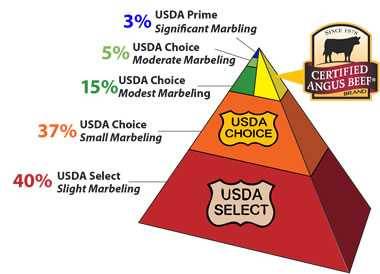
Wagyu beef
American Wagyu Beef. American Wagyu cattle have Japanese blood lines and are raised in the US and other countries. Their genetic heritage can be any of a number of Japanese cattle breeds. For years, American Wagyu did not have to adhere to standards, as did Kobe beef (below), and much of the American Wagyu available today is cross-bred to make the animals better adapted to the local climates and diseases. Wagyu and Angus (Wangus) crosses are frequent, and they make mighty fine meat. Wagyu is usually extremely marbled, more than USDA Prime, but not as much as Japanese Kobe, and the flavor and texture is distinctive. American Wagyu is about twice the price of USDA Prime.
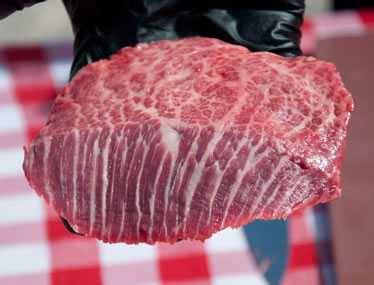
If you want to try some amazing real American Wagyu, I have links to top suppliers on our mail-order foods page. That’s a cross section of a Snake River Farms Wagyu flat iron steak above. The meat is simply remarkable, shot through with thin whisps of buttery marbling. Go for the ribeye or strip loin. Do not die without having tasted great American Wagyu. Steaks can run up to 30% fat and $60 to 70 for a 12 ounce ribeye.
That said, I do not recommend buying American Wagyu hamburger which is essentially pre-chewed meat, and which might have non-Wagyu fat in the blend. But if you’re after the big bux in a barbecue or steak competition, beware, the guy next to you is using American Wagyu.
Certified American Wagyu Beef. As you can imagine, Americans can easily get confused between “Kobe” beef and “Wagyu” cattle, especially since most American Wagyu is crossbred, but some is purebred Wagyu. To put an end to the confusion and to “fake Wagyu,” in May 2025, the USDA released American Wagyu certification standards in collaboration with the American Wagyu Association (AWA), dubbed the “Authentic Wagyu” program.
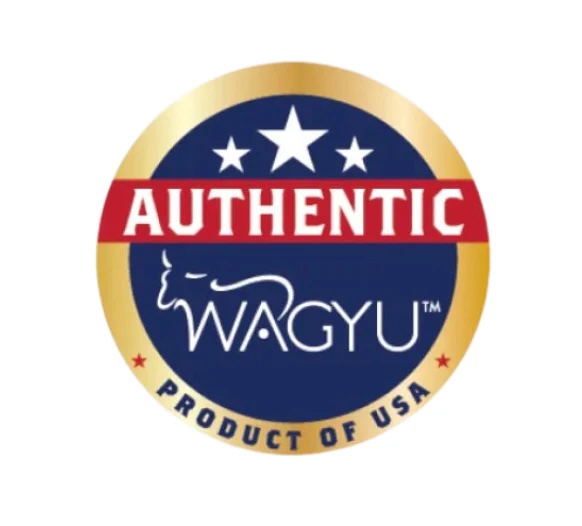
To qualify for certification, animals must be registered with the AWA; genetics must be verified through DNA testing; and producers must keep detailed records and meet USDA audit standards for traceability from ranch to plate. The meat must also meet the quality standards of the Authentic Wagyu program, which is set at a marbling score of 800 or higher (a level above the standard USDA Prime grade). The label definitions and certification requirements include:
Fullblood Wagyu (100% Wagyu): DNA parentage must be verified to both the sire and dam, which must both be registered with the AWA.
Purebred Wagyu (minimum 93.75% Wagyu): DNA parentage must be verified to both the sire and dam, which must both be registered with the AWA.
Wagyu-Influenced (Wagyu crossbreeds): Positive identification (ear tags or brands) and traceability to at least one registered parent are required.
In September 2025, Vermont Wagyu became the first U.S. ranch to receive certification under the Authentic Wagyu program. Vermont Wagyu is Fullblood Wagyu (100%) with zero crossbreeding and DNA-certified lineage traceable to Japan.
Back in 2024, the USDA released a new “upper Prime tier” to give American Wagyu producers, including producers of crossbreeds, a way to showcase the quality of their beef above the highest USDA Prime grade. The 2025 “Authentic Wagyu” certification program has even higher standards, so if you see the “Authentic Wagyu” label on beef, rest assured it is the most-marbled, highest-quality American Wagyu beef available, according to the USDA.
Busting the Kobe beef myth
About Kobe and other Japanese Wagyu. Japan is famous for highly marbled fabulously expensive beef, most notably the mythical Kobe. “Kobe Beef” is a trademarked brand name administered by the Kobe Beef Marketing & Distribution Promotion Association. They oversee producers, slaughterhouses, distributors, retailers, and restaurants who use the name in Japan. There are numerous regulations controlling when the name can be used, not the least of which is that the steer must be born, raised, and slaughtered in Hyogo prefecture (a prefecture is like a state), and fed a specified diet. A 12 ounce ribeye costs well over $150 retail.
There are four bloodlines of special rare fatted Japanese beef. As a group they are all called Wagyu (Wagyu translates roughly to mean “Japanese cow”). They have a high ratio of fat to muscle and are revered for flavor, tenderness, and most of all, the richness that comes from the chemistry of the fat which practically melts in your mouth like butter. They are not to be confused with American Wagyu, described above.
Kuroge Washu (Japanese Black) is one of the four and it accounts for about 90% of the specialty Japanese beef. It has several sub breeds, the most important of which is Tajima. Villages that grow Tajima according to rigid regimens name their beef after their origins, like European wines. Kobe is the most famous village, Omi is another, and Matsusaka is another.
BMS Scale
In Japan meat is graded A1 to A5, with A5 having the most internal fat. These five grades are broken down into 12 grades with a Beef Marbling Score called BMS. USDA Prime is 4 to 5 BMS (10 to 13% fat), American Wagyu is usually 4 to 10 BMS, Kobe and the other Kuroge Washu steers can go up to 12 BMS (more than 50% fat) because of their genetics, feed, and handling. Mostly genetics.
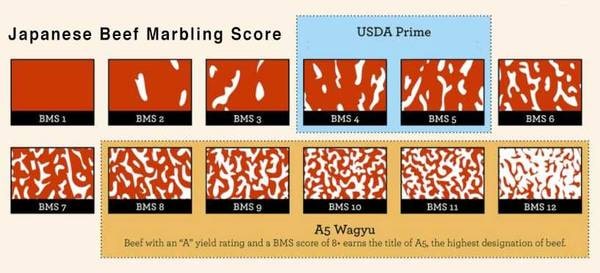
Kobe are fed mostly grain and sometimes mash left over from making sake and beer. Despite what you may have read, they are not fed beer. Nor are they massaged. A few may be massaged by loving owners paying for their childrens’ college, but it is not a normal part of their cultivation. Today, there are about 4,000 cattle slaughtered each year for Kobe beef, a pittance. 90% of all Kobe is consumed in Japan.
Until late 2012 Japanese beef was not allowed into the US. Until then, everything labeled Kobe was falsely labeled. Fake. Fraudulent. Phoney. Bogus. Disgraceful. It was probably American Wagyu at best. If you think you have tasted Kobe, chances are you have not. All Kobe is sold as boneless, so if you think that T-bone you had in Vegas was Kobe, it was not. And there are no Kobe burgers being sold in the US. If you know a restaurant that advertised Kobe beef prior to mid 2012, then they are likely selling mislabeled fish, too. Run.
Getting Kobe today
Even today, it is highly unlikely that a restaurant in the US or Canada advertising Kobe is selling the real deal. Last I checked in November 2017, only two dozen restaurants in the US carry the real thing. And because they are less known, anything labeled Kuroge Washu, Tajima, Matsusaka, Omi is even scarcer. But you can occasionally order Kuroge Washu in the US from select importers. I buy mine from Crowd Cow.
Some analogies. Champagne is a region in France. A “Champagne” from California is similar, could even be better, but it is not real Champagne and it is usually not even made from the same grapes. Idaho potatoes come only from Idaho, not France or Japan. Could you imagine the lawsuits if they grew potatoes in Japan and called them Idaho potatoes? Parmigiano-Reggiano is the real parmesan and it comes only from the area around Parma and Reggia in Italy, never from a green toilet paper tube. Maine lobster looks and tastes different than Florida lobster. Florida lobsters have no claws. Can you imagine ordering Maine lobster and not getting claws? In these cases, there is more to it than just a name. Real Kobe is truly different than any other meat in the world.
How to cook it
Here is how to cook it. The fat content and texture is close to pork belly or bacon. It is far too rich to just choke down a whole ribeye. I figure about 4 ounces per person. I serve it as an appetizer before a vegetarian meal. Usually a big salad. You could even serve it on top of a big salad, but you don’t want to bury it with a salad dressing. After tasting this you will not want any more meat and besides, serving more meat would be pointless.
Begin by thawing it. Get a black cast iron pan or griddle screaming hot. As hot as possible. Black will sear it better than stainless but some people recommend stainless. Beware, it can make the pan very hard to clean). You do not need to oil the pan, the fat will melt rapidly. I recommend that you do not cook the whole steak at once. Cut it into 1″ strips. Toss the meat on the heat and cook it long enough to get a dark brown surface, perhaps 3 to 4 minutes per side. You might want to cut a strip and test the timing before you start production. It is too thin to use a thermometer on. After you flip it, sprinkle some salt on the top. Sit down to eat so you don’t collapse in a dead faint.
Aging
After cattle are slaughtered chemical changes called rigor mortis make the meat tough within the first 12 hours. The carcass must be chilled rapidly but not frozen, and it takes a couple of days for the muscles to relax enough to be sold. This usually happens in shipment. After that it can be further aged, or ripened, to increase tenderness. Enzymes and oxygen begin to work on the meat during the aging process, but too much age can spoil the meat, especially if bacteria, yeasts, or molds attack the meat. There is a big difference between aged meat and old meat. In addition, aging does not enhance all cuts, and it is not necessary for ground beef. Pork and most poultry do not age well at all because their fats get rancid more rapidly than those of beef.
Fresh.
This seemingly desirable term means the meat has not been aged at all, so, unlike fruit, it is actually not a sign of highest quality.
Wet Aged Beef.
Most meat is shipped from slaughter houses as large wholesale cuts packed in plastic vacuum bags in boxes. If kept this way at 34 to 38°F for about 30 days, enzymes tenderize the meat, but the flavor is not as enhanced as it is in dry aging. If you buy vacuum packed beef that has not been aged, keeping it in the fridge for 2 to 3 weeks may tenderize it a bit.
Dry Aged Beef.
Dry aging beef is an expensive process for tenderizing beef and concentrating its flavor. The result is noticeably different tasting than fresh beef because the chemistry of the fat changes drastically. Some describe it as earthy, nutty, gamey, leathery, or even mushroomy. Some people are addicted, some just plain don’t like it.
Large hunks meat, usually the best cuts such as the rib primal, are held in a sanitary room at 34 to 38°F and 70-80% humidity, with brisk airflow for 30-75 days. Dry aging is sometimes called controlled rotting because the exterior of the muscle gets dark purple and mold sometimes grows on the outside of the meat.

In the picture above we see bone-in rib primals in the aging locker of David Burke’s Primehouse in Chicago (closed in 2017). They range from, left to right, 7 days, 20 days, 30 days, and 60 days.
During aging natural enzymes break down connective tissue and tenderize the meat while moisture evaporates shrinking the meat up to 20% (fresh beef is about 70% water). The outside crust is trimmed off before they are sliced into steaks and cooked, so another 15% is lost, although some of the trimmings are used in Primehouse’s incredible hamburgers. Aged steaks there sell for a bit less than $1 per day.
It is rare to find dry aged beef in grocery stores because most of them buy their meat in vacuum packed plastic bags. Some specialty butchers and high end restaurants offer dry aged beef. Because precise temp and humidity control are crucial, you should not try dry aging at home.
Other terms
Grass Fed Beef.
Until the 1950s, most US beef was grass fed right up to slaughter by being allowed to graze on open ranges. As the US population grew and demand for cheap beef grew, corn feeding of beef became the norm. Now there is a trend back to grass feeding because many believe it is better for the animals, for people who eat them, and the environment. Some people think grass-fed beef taste better than grain fed, but more think corn fed tastes best. There is a difference in taste. Grass fed beef can have a mineral quality. It can be very distinctive and have more personality than corn fed and many people, especially old timers raised on grass fed love it. Alas, many people aren’t charmed by its personality.
Grain or Corn Fed Beef.
For most of their lives, and especially just before slaughtering, most cattle in the US are fed corn. These cattle have slightly more fat and many people prefer the taste. Cattle love corn, but they do not easily digest it. The process is popular because the animals can be kept in tight pens in feed lots and do not have to graze over open land, and because the meat can be tender, juicy, and sweet.
Grass or Corn Finished.
Before slaughtering some cattle are brought to feed-lots where they are gorged and fattened. Sometimes grass-fed cattle are corn finished, so consumers who are concerned about corn feeding might also inquire if their grass fed cattle have been corn finished. It’s getting complicated out there…
Organic Beef.
USDA rules passed in 2002 state that certified organic beef must be produced according to strict rules that must be verified with an elaborate paper trail on every animal including its breed, feed, and medical history. To be certified organic it must eat only organic grasses and grains, have unrestricted outdoor access, must never be given antibiotics or hormones, and must be treated humanely. Organic beef is more expensive.
Natural Beef.
Natural beef must not be given antibiotics or hormones, but they can be grown, fed and handled in the same way as other common cattle. Some physicians and scientists think giving cattle antibiotics could be encouraging the appearance of antibiotic resistant microorganisms in humans.
Kosher Beef and Halal Beef.
These cattle are grown and slaughtered according to Jewish law (kosher) or Muslim law (Halal). Their requirements are similar. Both require that the animal be slaughtered by slitting the animal’s neck veins and drained of practically all blood. Some experts believe this method is painful and inhumane.
Buy only rosy colored beef, right? Maybe…
If that beef in the grocery is looking so rosy and delicious, that’s because it’s really fresh, right? Well, maybe not.
It seems that Cargill and others have perfected a process for sealing meat in an airtight pack with a carbon monoxide atmosphere, and that keeps the meat from oxidizing and turning brown. For a long time. Even if it is stored improperly.
Seems that even fresh meat can brown easily, and still taste just fine, but shoppers will buy the pink meat first even if it is not fresh. So grocers, who are cutting back on their butchering staff and hate wasting unsold meat, have turned to “modified atmosphere” pre-packaged beef, lamb, and tuna.
Consumer groups are fighting to have the stuff labeled, but the industry is resisting.
So the color of beef in a package is not a good measure of freshness anymore. Check the sell by date! Of course health inspectors can all tell you tales about butchers changing meat labels to extend the sell by date.
The solution? Get to know your butcher and stay on your toes.
Beware of blade tenderized beef
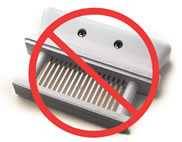
Some meat suppliers try to tenderize beef by using a device called a blade tenderizer. It is a series of thin sharp blades or needles that stab the meat and cut through tough fibers and connective tissues. Here is a picture of a home version called a jaccard. Commercial versions are motorized and much larger. They work, but they are also high risk.
Beef pathogens, like dangerous strains of E-coli, are common on the surface of meat, but they are killed almost instantly when cooked. But if the meat has been blade tenderized, these bugs can be pushed down into the center of the meat which often is not cooked enough to kill them.
According to the Centers for Disease Control and Prevention, between 2003 and 2009, blade tenderized beef caused 174 illnesses that we know of, and one person died. It is estimated that for every case reported, there may be 20 or more cases unreported.
You cannot tell by looking at meat if it has been mechanically tenderized so a USDA rule requiring labeling of blade or needle tenderized meat is trying to get on the books but is being held up by the bureaucracy.
Incidentally, meat labeled organic is allowed to be blade tenderized.
Where to get great beef
You can buy prime beef, aged beef, or Wagyu beef, but only specialty butchers have it. If you can’t find it in stores, order it online. We have recommendations of suppliers on our artisan foods page.
Where beef is heading
There is a rapidly growing vital movement to grass fed beef, sustainable beef, varietal beef, and even estate grown artisan beef. I think this movement will really catch on in the next decade as quality conscious and environmentally conscious consumers look for top quality, new flavors, and try to avoid factory farmed beef. The movement reminds me very much of what happened to the wine industry in the 1960s (yes, I’m that old).
Beef farming husbandry has been the subject of a great deal of controversy in recent years. The subject is much too large to cover here, and is discussed thoroughly in such books as Michael Pollan’s brilliant book, the Omnivore’s Dilemma, but here’s a summary:
Beginning with the Nixon administration, under Agriculture Secretary Earl Butz, US farm policy shifted billions of dollars to encourage and subsidize cheap corn. Corn is a miracle plant. Corn derived products can be found in about half the foods in your grocery store. It is also a great way to make farm animals grow large and fat quickly. With government help, research has significantly increased corn yield per acre.
Meanwhile, the number of buyers for corn has decreased, with the vast majority being purchased by Cargill and Monsanto. This has limited the market and put the squeeze on corn farmers while, at the same time, driving down the cost of corn. This makes many food products cheaper, from soft drinks to beef, not only in the US, but around the world. It has had the unpleasant side effect of pricing home-grown foods out of the market in many Third World nations, especially Africa, depressing the local economies, and transferring profit to US agribusiness multinational giants.
About CAFOs
As corn prices dropped, another farming revolution was taking place. The family farm began disappearing. After WWII, in the late 1940s, about 20% of the population was involved in farming. That number is down to about 2%. That’s because new technologies emerged and mass production concepts were adapted from the manufacturing industries. Among them were the use of steroids and hormones to speed animal growth. One of the most notable techniques to emerge was the appearance of concentrated animal feeding operations (CAFOs).
Most cattle are birthed and raised on farmer owned ranches where they are well cared for and get a mixed diet of hay and grains. But when they are close to slaughter, they are sold to CAFOs where they are switched to a diet of corn mixed with supplements, among them antibiotics to combat diseases that can be problematic in such tight quarters. Corn has the added benefit of making beef taste better because it can encourage better marbling. On the other hand, it can create digestive problems in cattle, which are ruminants, and genetically better suited to digesting cellulose, like grass. Corn’s high carbohydrate concentration can make them susceptible to digestive problems and the jam packed quarters cattle are kept in on CAFOs.
Many physicians are concerned that widespread use of antibiotics in farm animals, not just cattle, is allowing antibiotic resistant bacteria to generate, and they may jump to humans. Others are concerned that, despite research to the contrary, antibiotic, steroid, and hormone residues remain in the meat.
A new movement
As a result, consumers and farmers have found common ground and are spearheading a movement to a new way of growing beef. As an example, a ranch might select a bull whose bloodlines and offspring have proven to be high quality, much like race horses are bought at auction. They grow their cattle on a mix of grass and grain, allowing them to graze. This means more land is needed, and animal growth is slower, so costs are higher. They then slaughter, butcher, and market directly to consumers from the ranch, via the internet, via catalog, at farmers’ markets, and in specialty stores. At a higher price.
There are a number of luminaries and visionaries in the movement, among them Carrie Oliver who has created the Artisan Beef Institute, where she disseminates info about artisan beef producers and sponsors tastings. You can even buy a tasting of beef from different artisans for sharing with friends and the carnivore’s answer to a wine tasting. She says that many things influence the flavor of a steak, including the cattle’s diet, the treatment of the cattle, the time of year, and even the vintage. She predicts that steaklovers will start asking for their favorite breeds, areas of origin, ranchers, and even butchers.
I think she is right. I predict big things for this movement.

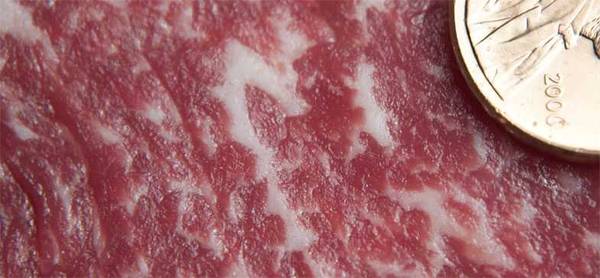
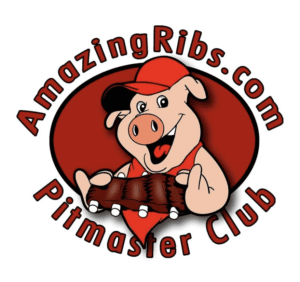
High quality websites are expensive to run. If you help us, we’ll pay you back bigtime with an ad-free experience and a lot of freebies!
Millions come to AmazingRibs.com every month for high quality tested recipes, tips on technique, science, mythbusting, product reviews, and inspiration. But it is expensive to run a website with more than 2,000 pages and we don’t have a big corporate partner to subsidize us.
Our most important source of sustenance is people who join our Pitmaster Club. But please don’t think of it as a donation. Members get MANY great benefits. We block all third-party ads, we give members free ebooks, magazines, interviews, webinars, more recipes, a monthly sweepstakes with prizes worth up to $2,000, discounts on products, and best of all a community of like-minded cooks free of flame wars. Click below to see all the benefits, take a free 30 day trial, and help keep this site alive.
Post comments and questions below
1) Please try the search box at the top of every page before you ask for help.
2) Try to post your question to the appropriate page.
3) Tell us everything we need to know to help such as the type of cooker and thermometer. Dial thermometers are often off by as much as 50°F so if you are not using a good digital thermometer we probably can’t help you with time and temp questions. Please read this article about thermometers.
4) If you are a member of the Pitmaster Club, your comments login is probably different.
5) Posts with links in them may not appear immediately.
Moderators